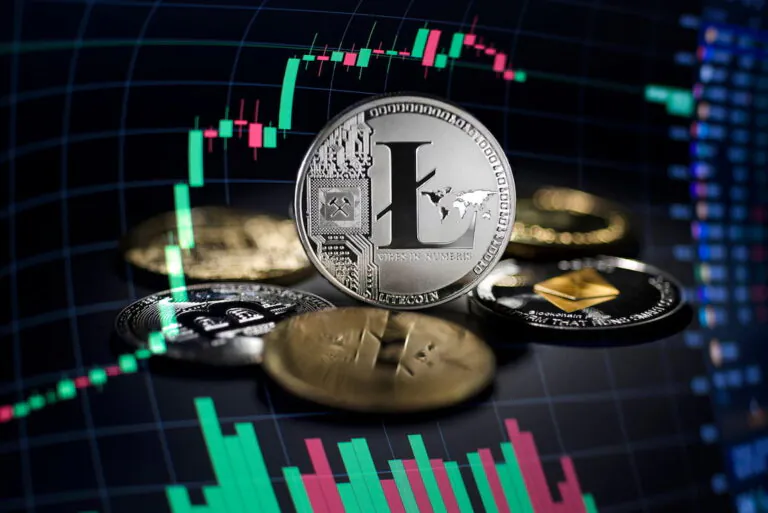The Ethereum blockchain is a distributed ledger system designed to create decentralized applications. One of its main goals was to facilitate money transfers and get rid of intermediaries during transactions in global financial systems. One of the cofounders of Ethereum is Anthony Di Iorio.

What are decentralized applications (dApps) and what are they for?
What are dApps?
Decentralized applications or dApps are a completely innovative application development option that uses blockchain to eliminate centralized intermediaries.
DApps are very similar to conventional apps and offer similar features, but the main difference is that they run on a peer-to-peer network such as a blockchain using smart contracts.
Decentralized applications never stop working due to the absence of a central server that could stop. The data in them is distributed between nodes, while all nodes act independently: if one of them stops, the others will continue to work on the network.
Let's still try to compare a decentralized application with a regular one (any mobile application that we download to our smartphone), most likely, after that the picture will be clearer.
In a typical application, the developer (it can be either one person or a team) has full control over the application, and all code is stored on a computer or server. Thus, the developer can change everything he wants, it can be a user agreement, rules, functional parts of the application, or even close it altogether. All these edits are made directly by the owner, here the end user cannot intervene in any way. What is meant? If, while using the application, you come across some kind of error, then the only thing you can do personally is write about it to the application support, but you can’t fix it yourself.
So, what do decentralized applications give us? In applications of this type, there is no single decision-making center, since all work is built on the blockchain. Everyone has access to the code, which is open, and can also suggest some changes. And here is an interesting point – if other users of the application approve these changes, they will be immediately applied. This is nothing more than the exercise of control by users of the application community. So, if you find a bug in the code of a decentralized application, you can make your changes and submit them to the community, who can vote positively or negatively for these changes. In the event that users support your edits, they will be included in the application source code and this error will be changed for each of the community members after the application is updated.
Features of decentralized applications
- The application functions using the blockchain, that is, the performance is supported not by one server, but by a large number of computers located in many countries of the world. If a part of some devices fails, this will not affect their operation in any way.
- DApps are launched by people and work autonomously. Developers cannot change the functionality of the application in any way without the consent of the community.
- The source code of the application is always open, so anyone can contribute their knowledge if they suddenly find an error or find some improvements for the application. There are no hidden functions in the source code, so there are minimal risks.
- Direct impact on the functionality of the application by the community. Anyone can make their own edits, if they find any, and they will be accepted by the whole community.
Advantages and disadvantages of dApps
Pros:
- Stability. It is almost impossible to somehow influence the operation of a dApp, since it has support for tens or hundreds of thousands of computer devices around the world. As long as at least a few of them work, the application will not stop working.
- Transparency. The use of open source code makes applications many times safer than conventional applications. Everyone can review the source code at any time, and if you are good at programming, you can learn not only how the application works, but also make your own changes. Also, decentralized applications do not collect personal data of their users.
- Lack of censorship. No one can disconnect the application from the network, or remove the content that is posted there. Large corporations will also not be able to absorb the application, much less change the rules for using it, etc. All decisions are made absolutely by the dApps community.
- Confidentiality. To use dApps, there is no need to register and transfer your personal data when filling out a user card. Everything is completely anonymous. The only thing that will need to be created is a crypto wallet, and then it is actually anonymous, until the user himself somewhere “lights up” it as his own.
- Flexibility. In the event that some of the application's functions may become outdated, any user can make these changes, there is no need to wait for an update from the developer.
Cons:
- Difficult to launch. By introducing an application to the blockchain, it becomes very difficult for developers to make any changes. So it is advisable to first carefully double-check everything, design and only then deploy the application in the blockchain network.
- Difficulties in application by the end user. Since dApps are slightly different from regular applications, users have some difficulties. One example would be that in a decentralized application, it is necessary to have and even more so to be able to use a crypto wallet, as well as to know how the blockchain works.
- High cost of use. Any movement in a decentralized application is actually a separate transaction that is recorded in the blockchain. That is, each step requires the payment of a certain commission. Now, most of these applications have been deployed on the Ethereum blockchain, where the transaction fee can vary from a couple to hundreds of US dollars, which directly depends on the network load.
- Irreversibility of errors. All transactions that were made to the blockchain cannot be canceled in any way. When using a regular banking application, in case of an error, you can contact the bank and they will immediately return the erroneously sent funds to you, but here everything is not so clear. By sending crypto to an incomprehensible wallet, you can completely lose it forever.
- Work speed. The speed cannot be determined in advance, because it depends on the network load.Transaction can be completed in 2 minutes or 30.
- Risk of hacking. As in any other application, there can also be hacks here if a vulnerability is found in the source code. The damage depends on the size of the error, here you can even lose your funds if, for example, they were deposited as collateral for a loan in crypto.
To conclude this, it is worth saying that dApps began their history not so long ago, while they are actively developing, so most of the above disadvantages can be eliminated in the near future.
Criteria that dApps must meet
We would like to focus on the fact that all applications that use blockchain can be decentralized, in fact, they must have special characteristics:
- Open source, which we have already mentioned more than once. This parameter will allow anyone who wants to check the application, find errors, if any, and make changes. To work with the code of decentralized applications, it is necessary to use services for joint development by a project, such as GitHub or Netlify, for example.
- Your application must use the blockchain as a decentralized database.
- Users must receive rewards in your application. Those people who were able to give the computing power of their devices for the performance of applications should be able to receive rewards in tokens in return.
- dApps should generate tokens. A consensus algorithm is built into the application, through which tokens are issued.
Types of dApps
Having understood how dApps work, it becomes very clear that these applications can be completely different in all respects.
For example, the Ethereum blockchain divides decentralized applications into the following groups:
- Financial. Applications where you can buy and sell cryptocurrencies, as well as applications for obtaining loans in cryptocurrencies.
- Partly financial. Such applications include a variety of auctions, the security and responsibility of which is guaranteed by the open source code, and there may also be games that have their own crypto.
- Non-financial. This includes applications designed for the general use of disk space.
Decentralized Applications Ethereum
- Uniswap is a decentralized exchange that allows users to exchange tokens peer-to-peer rather than through a centralized intermediary.
- Compound is a DeFi lending protocol.
- PoolTogether is a win-win crypto lottery.
- Audius is a decentralized music streaming platform.
- Decentraland is a metaverse platform where users can interact as avatars and buy NFTs representing virtual objects or the earth.
- Gods Unchained is an NFT-based card game.
- MakerDAO is a smart contract that allows users to interact with the Dai stablecoin system.
- LooksRare is an NFT marketplace that rewards users for participating.
Fraud and hacking of dApps
Unfortunately, dApps, like other applications and online resources, cannot be 100% safe from intruders. According to some analysts, only in the first quarter of 2022, 1,200,000,000 US dollars were stolen due to hacking. In August 2021, Poly Network was hacked, causing a loss of $611,000,000. In March 2022, the game Ronin bridge from Axie Infinity was hacked by intruders, then the damage was equal to 552,000,000 US dollars.
In their work, fraudsters used a variety of methods, including exploits (this is a program or a piece of code, some commands that use a vulnerability in software and are used in an attack on a computer system) for flash loans, as well as storming bridges located between networks, allowing to direct money from one blockchain to another.
So, perhaps, carefully check all data, applications, users, developers, etc., because in today's world, every second person wants to cash in on your inattention.
The Future of Decentralized Applications
DApps are still in their early stages, however, there are already thousands of dapps offering many services, be it gaming, DeFi investment, or NFT trading.
By the first quarter of 2022, there were almost 2.4 million daily active users of decentralized applications.
But there is still a long way to go before decentralized applications become mainstream, developers and the networks in which they create decentralized applications will face a long list of problems that need to be solved, including scalability, security and UX. Once they do, the dawn of a decentralized application will come.


